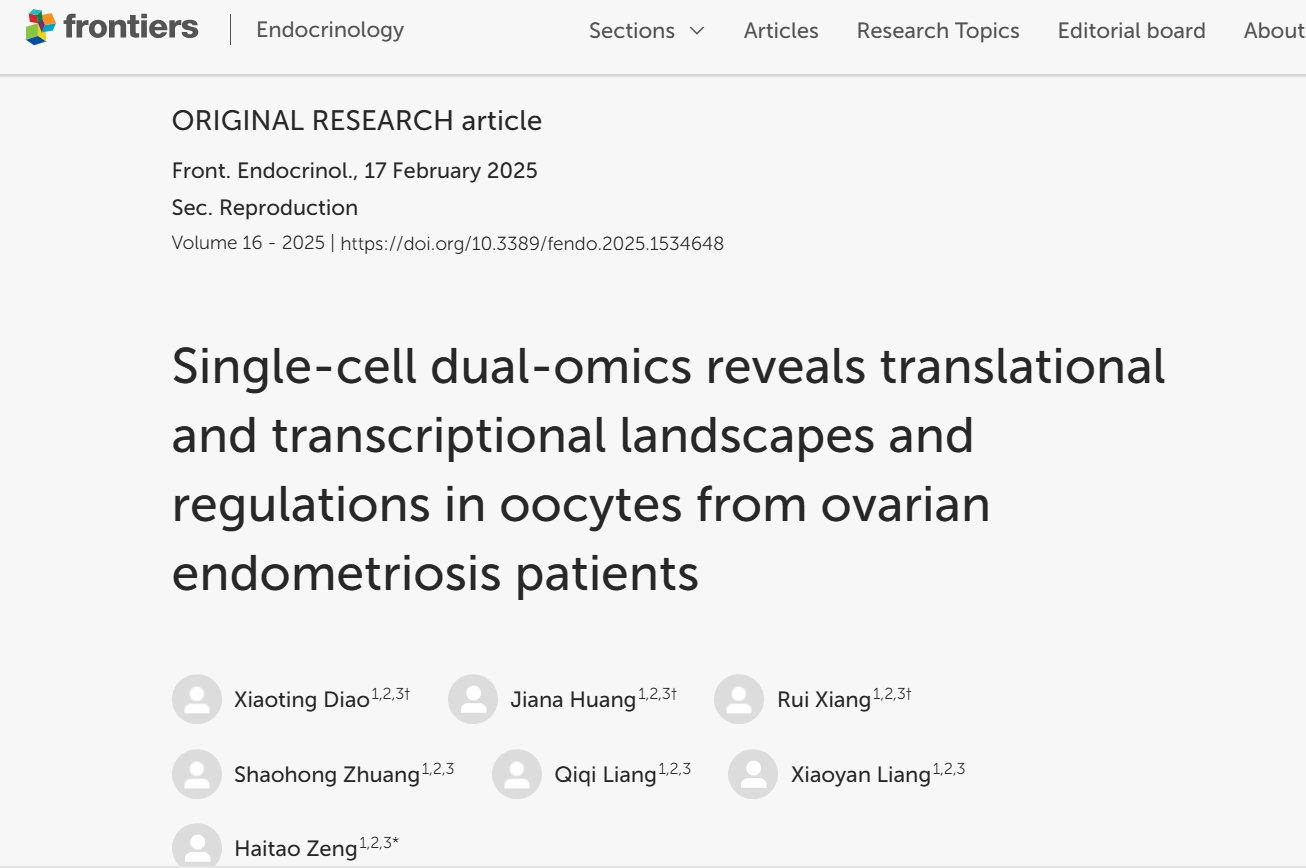Translation Efficiency (TE)
19 February 2025

Single-cell dual-omics reveals translational and transcriptional landscapes and regulations in oocytes from ovarian endometriosis patients
Diao, X. et al. (2025) ‘Single-cell dual-omics reveals translational and transcriptional landscapes and regulations in oocytes from ovarian endometriosis patients’, Frontiers in Endocrinology, 16. doi:10.3389/fendo.2025.1534648.
Introduction: A significant proportion of women in their reproductive years are afflicted by endometriosis. And one of the major contributing factors to infertility linked to ovarian endometriosis is thought to be oocyte quality. The precise molecular mechanisms are still unknown. Furthermore, because of transcriptional silence, translatome is better able to explain molecular behavior in oocytes than transcriptome sequencing, which has been used widely in recent years.
Methods: We conducted single-cell transcriptome and translatome sequencing on oocytes obtained from patients with ovarian endometriosis, as well as from control subjects with infertility due to tubal or male factors.
Results: For the first time, we characterized the translational and transcriptional profiles of mRNA in GV-stage oocytes from patients with ovarian endometriosis and control subjects. Our translational analysis identified 2,480 differentially expressed genes in oocytes from ovarian endometriosis patients. Furthermore, we demonstrated that global translational activity in human oocytes is significantly altered by ovarian endometriosis. Key pathways such as "oxidative stress," "oocyte meiosis," and "spliceosome" were identified as critical factors influencing oocyte quality in ovarian endometriosis patients.
Discussion: This study elucidated the molecular characteristics and potential mechanisms underlying poor oocyte quality in patients with ovarian endometriosis. Our findings provided new insights into the pathogenesis of endometriosis-associated infertility and highlighted potential therapeutic targets for improving oocyte quality and reproductive outcomes.

